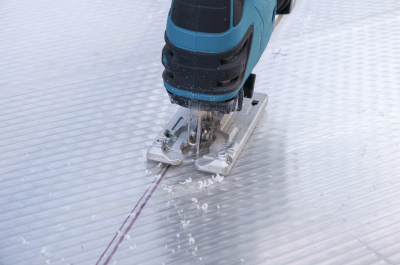What Is Polycarbonate Machining?

Polycarbonate machining encompasses various processes such as cutting, bending, and welding of polycarbonate, a versatile thermoplastic resin. This material is available in three types of sheet: flat, hollow, and corrugated.
Notable for its excellent impact resistance — 50 times greater than acrylic — and durability against weather elements, polycarbonate is self-extinguishing and boasts high transparency. However, it is susceptible to stress corrosion from organic solvents, which restricts the use of solvent-based adhesives, and its surface is prone to scratching.
Uses of Polycarbonate Machining
Polycarbonate machining is pivotal in producing components that metals cannot easily create, including various cutting, shaping, bending, and welding applications. Despite its hardness, which presents both advantages and challenges during machining, ensuring smooth, chamfered edges post-cutting is crucial to avoid sharpness. Utilized for its transparency, machined polycarbonate products include eyeglass lenses, smartphone cases, and clear partitions.
Types of Polycarbonate Machining
Machining polycarbonate primarily involves cutting, chamfering, bending, and bonding. Welding is feasible but requires specialized hot-air welding equipment, as typical metal welding tools are unsuitable.
1. Cutting Process
Cutting is performed using acrylic cutters, disk grinders for small quantities, and metal scissors for thin, flat sheets.
2. Bending
Bending polycarbonate without heating involves techniques similar to fitting into grooves, akin to aluminum sash processes.
3. Cutting
Compared to metals, cutting and lathing polycarbonate is relatively straightforward, allowing for more intricate designs and cost-effective production.
4. Bonding
Bonding is achievable through solvent or adhesive methods, though the choice of solvent is crucial to maintaining transparency and integrity.
Principle of Polycarbonate Machining
Polycarbonate machining utilizes NC data from product drawings to set various parameters such as speed, direction, and tool rotation. Materials are cut slightly larger than needed, placed on an NC router, and processed based on NC data. Post-processing includes burr removal and finishing, with final inspections ensuring accurate dimensions and hole diameters.
Structure of Polycarbonate Machining
Polycarbonate resin, an amorphous thermoplastic, features a carbonate ester structure in its molecular makeup, primarily produced using bisphenol A.
How to Select Polycarbonate Machining
As a standout engineering plastic, polycarbonate excels in impact resistance, being significantly tougher than glass and acrylic. It is flame-retardant, hygienic, and performs reliably across a broad temperature range. With a heat resistance of 248 °F (120 °C) and light transmission comparable to glass, polycarbonate is a preferred choice for transparent applications. Its weaknesses include sensitivity to alkalis, organic solvents, and limited chemical resistance, leading to potential cracking and deformation. To mitigate these drawbacks, alloying with ABS or crystalline resins like PBT and PET can enhance flowability and chemical resistance.